Credentialing can be a long and tedious process that often tests the limits of even the most organized healthcare organizations. When a practice has to wait months to onboard a new physician or specialty after a merger, it can hinder patient access to care and disrupt revenue cycles. Provider credentialing software can help avoid these scenarios by streamlining provider data collection, verification, and management.
This guide explores the best credentialing software on the market today and how these solutions can improve efficiency, reduce costs, and allow healthcare organizations with innovative data management.
Azulity’s provider credentialing services are a robust solution to help your organization get back on track with onboarding and maintaining credentials. By automating tedious tasks like data collection and verification, our software can help reduce the time it takes to credential new providers and avoid costly delays in patient care.
Benefits of Using Credentialing Software In Healthcare
![]()
Stay Compliant with Credentialing Software
Provider credentialing helps healthcare organizations comply with state and federal regulations and industry standards. By verifying that providers possess the necessary qualifications and certifications, credentialing helps avoid costly fines and penalties associated with noncompliance.
Enhance Patient Safety
Credentialing verifies that a healthcare provider is qualified and competent to provide care and services. This process helps ensure patient safety and quality of care, ultimately increasing the likelihood of positive health outcomes.
Build Patient Trust
Patients are more likely to trust healthcare providers who have been appropriately credentialed and have undergone thorough background checks. This trust can lead to increased patient satisfaction and retention.
Speed Up Contracting
Credentialing is often a requirement for healthcare providers to participate in insurance networks and other reimbursement programs. By meeting these requirements, providers can expand their patient base and increase revenue.
Reduce Liability
By verifying a healthcare provider’s credentials, healthcare organizations can reduce their liability in the event of malpractice or other issues and help protect their reputation.
Improve Efficiency
Credentialing can help healthcare organizations streamline operations by ensuring that all providers meet the same standards and requirements. This can lead to more efficient workflows and better patient outcomes.
7 Best Credentialing Software for Healthcare
1. Azulity: Streamlining Healthcare Credentialing for Better Outcomes
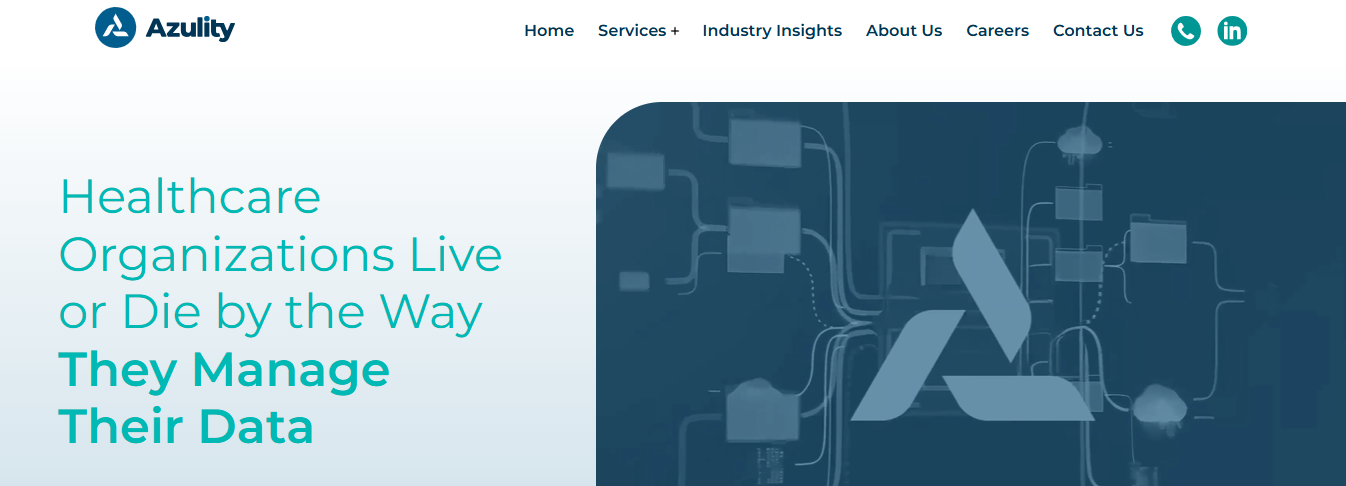

Azulity specializes in healthcare master data management and provider credentialing services, bringing proven expertise in implementing healthcare data solutions and credentialing across the US. Our comprehensive platform ensures consistent patient, provider, location, and claims data synchronization across all systems and departments.
Key features include healthcare MDM, provider MDM, reference data management, credentialing, and provider enrollment. We serve healthcare technology leaders – from CIOs and CDOs to VPs of data platforms and credentialing – helping them eliminate the costly problems of fragmented data systems. Book a call to learn more about our healthcare master data management services today
2. NextGen Healthcare EHR: An All-in-One Solution for Ambulatory Practices
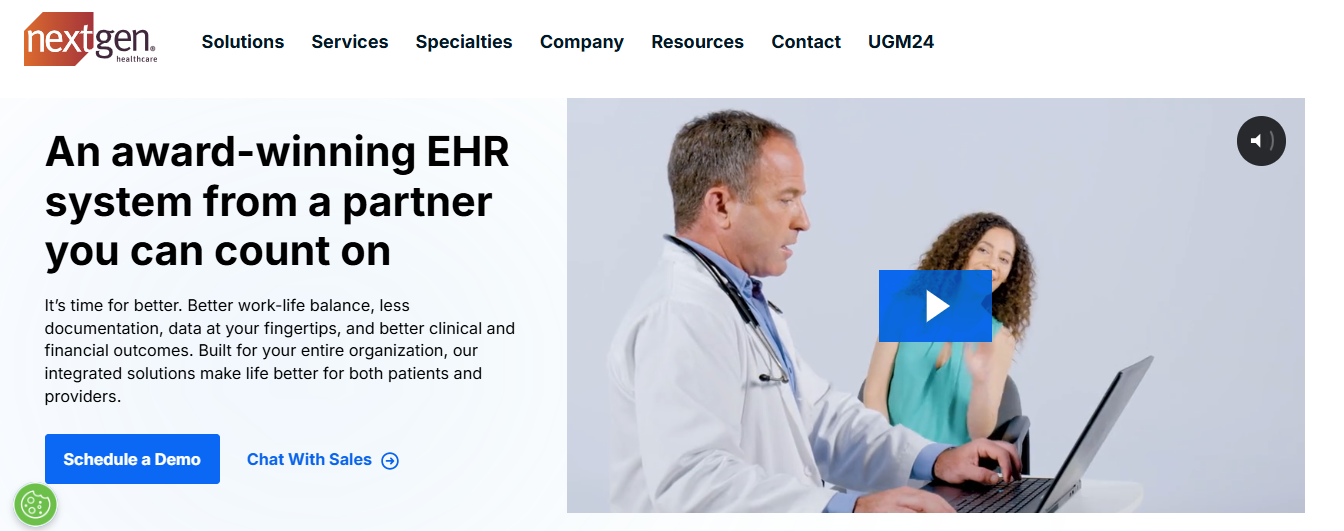

NextGen Healthcare is a leader in healthcare software and services that enables the transformation of ambulatory healthcare. NextGen Office (1-10 doctors) and NextGen Enterprise (10+ doctors) are intelligent electronic health record solutions that help ambulatory practices reduce the burden of documentation, improve clinical outcomes, connect to other health systems, increase provider and patient satisfaction, streamline revenue cycles, and foster healthier communities.
Pros
- User-friendly: The interface is designed for beginners.
- Comprehensive NextGen offers a variety of features for managing patient care.
- Affordable Smaller practices may find NextGen cheaper than other EHR systems.
- Secure NextGen offers secure data sharing and storage.
- Patient portal: The patient portal can help engage patients and improve outcomes.
- SOAP notes: Users can save SOAP notes without losing their format.
Cons
- Cost The price of NextGen may be a deterrent for smaller practices.
- Complexity Some users find NextGen to be complex.
- Setup: Some users need help setting up and transferring data.
- Some users need to do a lot of manual work to get NextGen fully running.
3. KLAS: Improving Healthcare Through Technology
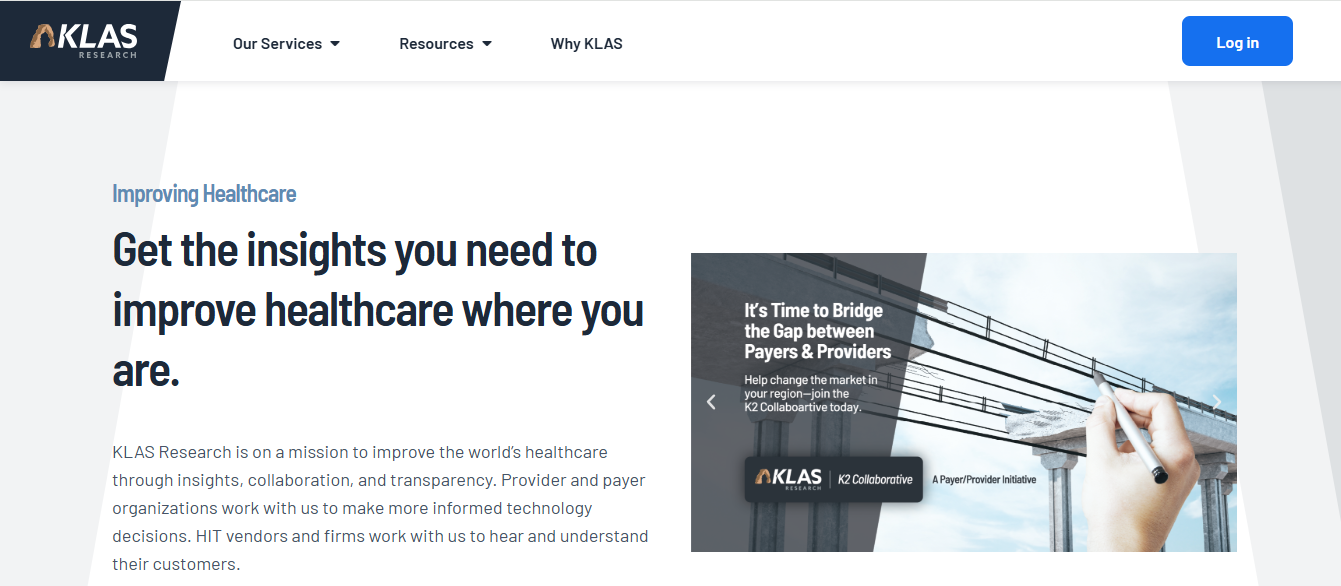

Software designed to help healthcare organizations streamline, automate, and track the credentialing and re-credentialing process. The software helps manage primary source verification and application processes, maintain and track organizational records (e.g., compliance training and immunizations), and monitor peer reviews and ongoing performance (OPPE/FPPE).
Pros
- Mission: Some say KLAS has a great mission of improving healthcare through technology
- Culture: Some say the culture is great and the people are friendly
- Reviews: Some say KLAS is praised for its honest, fair reviews
Cons
- Work environment: Some say the work environment can be frustrating, with long hours, burnout, and underpayment
- Growth opportunities: Some say there aren’t many areas for growth
4. Credentialing Spectrum: A Comprehensive Automation Solution
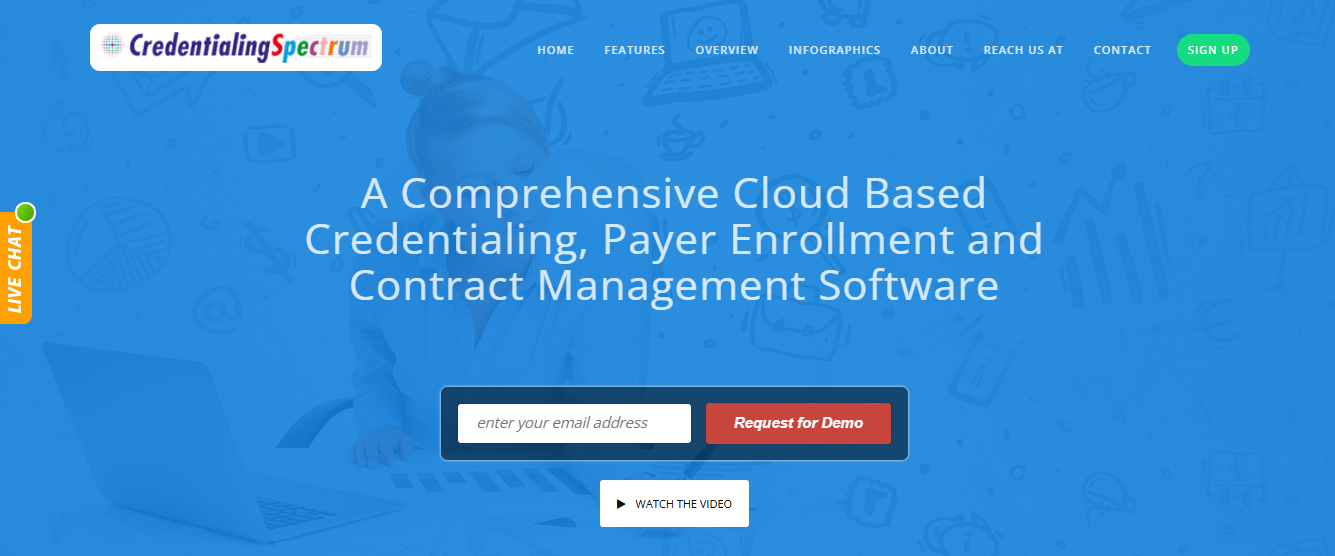
CredentialingSpectrum is a secured, cloud-based medical credentialing software for facility, payer, and contract management. It is a healthcare credentialing system that simplifies the process and increases efficiency. CredentialingSpectrum is a one-click comprehensive automation system that makes it convenient.
Pros
- Automates tasks: CredentialingSpectrum can automate provider credentialing, enrollment, and privilege management.
- Saves time: CredentialingSpectrum can help save time for staff by automating tasks.
- Improves efficiency: CredentialingSpectrum can improve efficiency for healthcare organizations of all sizes.
Cons
- Credentialing is complex: The credentialing process can be complex and involve many variables.
- Credentialing can be lengthy: The credentialing process can be lengthy and labor-intensive, taking up to 90 days for an application review.
5. MedTrainer: Enhancing Compliance and Credentialing Workflows
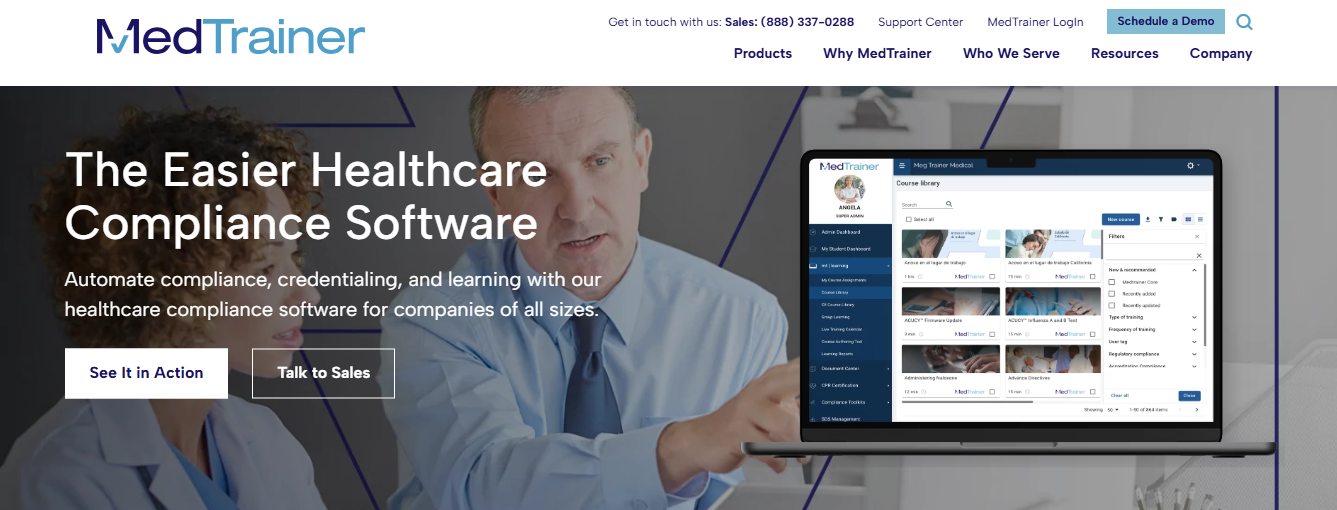

MedTrainer Credentialing is built for healthcare organizations that want to manage the credentialing process but need to complete more in less time. G2 reviewers agree, ranking MedTrainer as a High Performer for Healthcare Credentialing Software for the second straight quarter and notching the highest overall score for Quality of Support in the G2 Summer 2024 Report.
More than 3,000 organizations rely on MedTrainer to streamline compliance with a unified digital platform that optimizes workflows and accelerates education, credentialing, and documentation. As a leader in healthcare technology, MedTrainer constantly innovates to give customers the best experience and the most capabilities within one platform.
Pros
- Comprehensive solution for healthcare compliance training and credentialing
- Intuitive dashboard for real-time visibility and analytics
- Responsive customer support
- Up-to-date content library from expert partners
Cons
- Some users mentioned the learning curve to be slightly steep
- It may require customizations to meet unique organizational needs fully
6. Credential Stream: The Most Comprehensive Solution Available
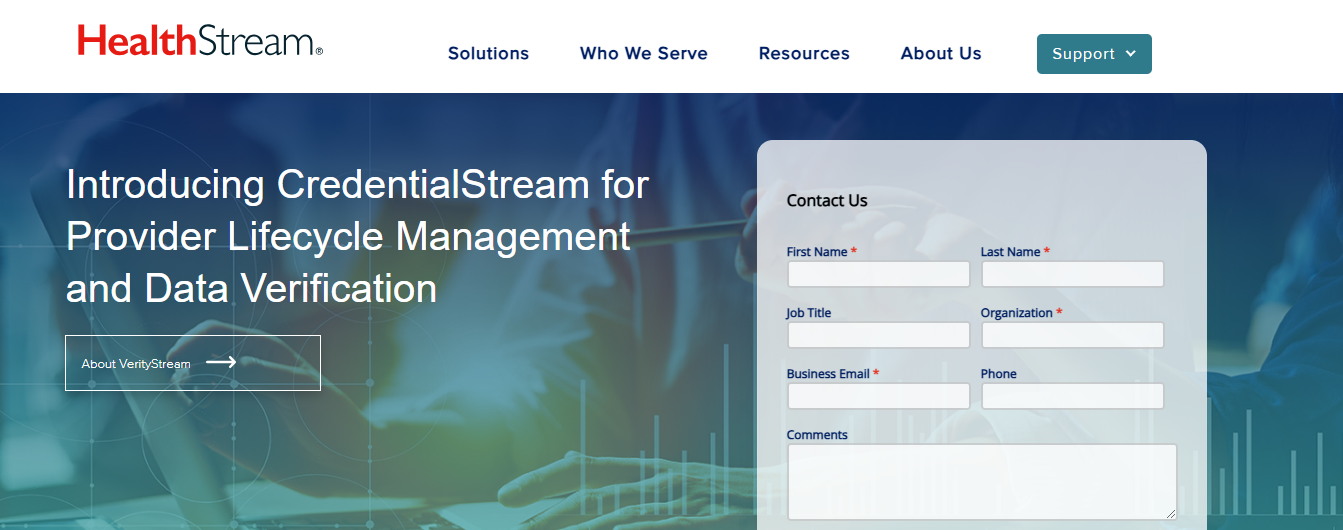

CredentialStream® incorporates patented technology that provides everything necessary for requesting, gathering, and validating information about a provider, all to establish a reliable Source of Truth for downstream processes.
With a modern, continuously updated platform, best-practice content libraries, and industry-leading data sets, CredentialStream stands out as the most comprehensive provider lifecycle management solution available.
Pros of CredentialStream Software
- Automation: Streamlines credentialing and compliance processes, saving time.
- Accuracy: Reduces human errors with centralized data management.
- Compliance: Ensures adherence to industry regulations.
- Efficiency: Speeds up onboarding and renewals.
- Integration: Works with HR and LMS systems for smooth workflows.
Cons of CredentialStream Software
- Cost: High implementation and licensing fees.
- Setup: Complex and time-consuming to configure.
- Learning Curve: Requires staff training.
7. Competency Manager: A Robust Learning Solution
Train employees, demonstrate competency, and mitigate risk. Competency Manager is an enterprise learning solution that enables professional development and reduces compliance risk. It is for medium-sized to large companies in manufacturing, education, and healthcare. Learn how it works for managers, employees, and SMEs.
Pros
- Skill Gap Analysis: Identifies areas for employee development.
- Centralized Management: Simplifies tracking and storing competency data.
- Custom Frameworks: Tailored to industry or organizational needs.
- Career Pathing: Supports employee growth and advancement.
Cons
- High Costs: Expensive implementation and maintenance.
- Complex Setup: It is time-intensive to create competency models.
- Adoption Challenges: Resistance from staff or managers.
Related Reading
- CVO Credentialing
- How to Credential a Provider
- Credentialing in Healthcare
- How Long Does Credentialing Take
How to Choose the Best Credentialing Software


Why Choose Credentialing Software?
Before you start to research vendor options, take time to consider why your organization wants credentialing software and why it’s essential now. For example, maybe you want to replace time-consuming manual processes or a paper-based system to improve productivity and efficiency. Perhaps you want to streamline credentialing to reduce risk, improve compliance, and enhance patient care. Whatever the reasons, documenting them will help you build a solid business case for the software as you include stakeholder feedback and explore vendor options.
Do the Benefits Outweigh the Drawbacks?
Like any new system, credentialing software comes with advantages and challenges. You have to determine if the benefits of implementing the software will outweigh any short-term drawbacks your organization might encounter. For instance, think about the time it will take for your staff to learn to use the software, and keep in mind the capabilities and capacity of your information technology (IT) department if you house the software on a local server.
What Will It Cost?
When investigating options, it’s essential to consider the price of the credentialing software and any other anticipated costs. For instance, will you need additional hardware to support the system? What about training costs for your staff? If you’re implementing the software to improve compliance, will it help you avoid costly penalties from regulators? As you investigate vendor options, ask each one to detail any extra charges that could impact your budget.
What’s the Expected ROI?
As you’re assessing credentialing software, calculate the return on investment (ROI) you could expect. For instance, if the system helps your organization avoid costly compliance penalties, that figure could go a long way toward offsetting the cost of the software. Also, consider how much time the system could save your organization to improve productivity. The faster you can credential providers, the sooner they can begin seeing patients, which can positively impact your organization’s revenue.
How Many Users Will Need Access?
You must also determine how many users will need access to the software. Will you need the software for one location or entity or more than one? If you have multiple facilities, it’s crucial to ensure the credentialing software can support the needs of all entities.
What’s a Realistic Implementation Timeline?
As you investigate options, ask vendors about their implementation processes and a realistic timeline for their software. Robust credentialing software should have intuitive features that make it easy to use and shorten the learning curve for new users. You must give your organization enough time to train staff and transition to the new system before expecting them to produce operational metrics on the software.
Who Will Champion the Project?
Like any new system, credentialing software will require commitment from your organization’s staff to ensure a successful transition. It’s critical to have buy-in from key stakeholders, including department and organizational leaders. Who will be the lead sponsor and project manager within your organization? Who will be in charge of implementing the system?
Consider the Must-Have Features
Robust credentialing software should also do the following:
- Provide the option to house the system on the cloud, which means your organization’s representatives and providers can securely access the system from any digital device.
- Integrate with provider credentialing information from the Council for Affordable Quality Healthcare (CAQH). CAQH is a not-for-profit alliance of health insurers that gathers and maintains a repository of provider credentialing information.
- Track and monitor credentials for healthcare providers other than physicians, including nurse practitioners, physician assistants, physical therapists, and mental health providers.
- Automatically give updates and warnings on upcoming expirations of certificates or other renewable credentials.
- Track continuing medical education requirements.
- Incorporate an easy peer review process, wherein the software solicits, incorporates, and stores feedback about the provider from current and former colleagues.
- Be implemented and learned by staff in a relatively short period.
- Have an easy-to-understand interface with a dashboard, graphics, and drag-and-drop capabilities.
- Include large amounts of space to store and manage any data an organization wants to retain about a provider.
- Allow for the use of electronic forms and e-signatures.
- Generate customized reports.
- Integrate with word processing software to easily create letters and documents.
- Integrate with email software for accessible communication through the system.
- Track operational metrics by institution, a specific facility location, or a provider.
- Enhance workflow, allowing for the generation of work lists and follow-up requirements.
- Meet credentialing requirements from the Joint Commission and the National Committee on Quality Assurance (NCQA).
- Show hospital privileging information.
- Offer excellent customer support.
Azulity: Who We Are and What We Do
Azulity specializes in healthcare master data management and provider credentialing services, bringing proven expertise in implementing healthcare data solutions and credentialing across the US. Our comprehensive platform ensures consistent patient, provider, location, and claims data synchronization across all systems and departments.
Key features include healthcare MDM, provider MDM, reference data management, credentialing, and provider enrollment. We serve healthcare technology leaders – from CIOs and CDOs to VPs of data platforms and credentialing – helping them eliminate the costly problems of fragmented data systems. Book a call to learn more about our healthcare master data management services today!
Related Reading
- Credentialing and Privileging
- How Much Does Credentialing Cost
- Types of Credentialing in Healthcare
- Hospital Credentialing Requirements
- Provider Enrollment and Credentialing
- Primary Source Verification Credentialing
What Problems Does Credentialing Software Solve?


Safeguarding Patients with Thorough Provider Credentialing
Provider credentialing improves safety for patients and healthcare organizations alike. Credentialing verifies that healthcare professionals have the necessary qualifications to deliver care. This process reduces the risks associated with unqualified or underqualified providers delivering care. Preventing errors ensures that patients receive care from competent professionals. For example, verifying a surgeon’s board certification ensures they meet the standards for performing specialized procedures.
Maintaining Compliance with Regulations Through Ongoing Credentialing
Healthcare organizations must adhere to strict legal and accreditation standards. Credentialing helps facilities comply with requirements set by regulatory bodies like The Joint Commission (TJC), CMS, and state medical boards. This process helps avoid legal issues, fines, or loss of accreditation for non-compliance. For example, a hospital that maintains up-to-date credentialing records avoids penalties during audits.
Reducing Risk and Liability Through Provider Credentialing
Credentialing helps healthcare organizations identify and mitigate malpractice, fraud, or unethical behavior risks by thoroughly reviewing provider backgrounds. This process lowers the risk of malpractice claims and protects the institution’s reputation. For example, checking a physician’s malpractice claims history reveals patterns of concern that can influence hiring decisions.
Insurance Credentialing Facilitates Reimbursements
Most insurance companies require credentialed providers before reimbursing claims. Credentialing ensures that providers are in-network and eligible for payment. This process prevents claim denials and revenue loss for healthcare organizations. For example, a clinic that provides its new physician is credentialed, and major insurers experience uninterrupted reimbursements for patient visits.
Increasing Patient Trust with Provider Credentialing
Credentialing reassures patients that their healthcare providers meet industry standards for knowledge, skills, and professionalism. This process builds confidence in the healthcare system and fosters patient loyalty. For example, displaying credentials and certifications in patient-facing areas helps build trust.
Improving Operational Efficiency with Streamlined Credentialing
Credentialing systems and processes provide a standardized approach to onboarding providers, ensuring readiness to practice quickly. This process reduces administrative delays in integrating new providers into the healthcare team. For example, a hospital using automated credentialing software speeds up the approval process for new hires.
Supporting Credential Reciprocity for Smooth Transitions
Credentialing supports simplified verification processes for providers moving between states or facilities, enabling continuity of care. This process minimizes delays in provider relocations or multi-state practices. For example, a telehealth provider credentialed in one state can more easily get approval to practice in another through credential reciprocity programs.
Meeting Payer Requirements with Credentialing
Many insurance payers mandate credentialing to establish network contracts with providers, ensuring both parties align on professional and legal standards. This process ensures compliance with payer-specific rules, reducing contractual disputes. For example, a cardiology practice avoids losing its contract with a major insurer by maintaining accurate and current provider credentials.
Book a Call to Learn More About Our Provider Credentialing Services
Azulity specializes in healthcare master data management and provider credentialing services, bringing proven expertise in implementing healthcare data solutions and credentialing across the US. Our comprehensive platform ensures consistent patient, provider, location, and claims data synchronization across all systems and departments.
Key features include healthcare MDM, provider MDM, reference data management, credentialing, and provider enrollment. We serve healthcare technology leaders – from CIOs and CDOs to VPs of data platforms and credentialing – helping them eliminate the costly problems of fragmented data systems. Book a call to learn more about our healthcare master data management services today!